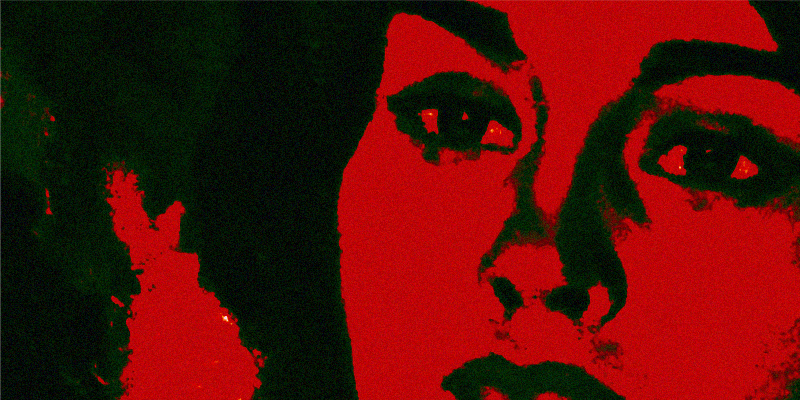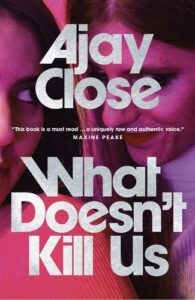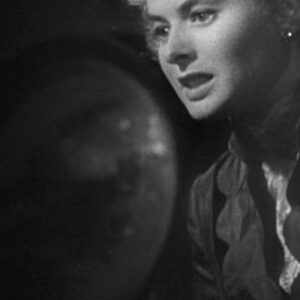I was 15 in 1975 when the man then only known as the Yorkshire Ripper committed his first murder, and 21 when he was caught – in Sheffield, about a mile from where I was living – by a probationer PC checking a fake car number plate. I remember the fear taking a while to build, but the year I left university the Ripper killed his thirteenth female victim, Jacqueline Hill, a 20-year-old student. By then every Yorkshirewoman I knew thought twice before leaving home after dark. I was a feminist, I wasn’t going to let someone I’d never met put me under curfew, so I carried on walking home alone late at night, hypervigilant, suspicious of every man I passed. Police were prosecuting women carrying knives to defend themselves, so I used to take a frozen chicken in a carrier bag, hoping a well-aimed blow would buy me a few seconds to run away.
Each time I came home I popped that chicken back in the freezer so it would be nice and hard the next time I went out. (No, I never ate it.) Remembering how violently I used to practise swinging it in its plastic carrier, what’s clear to me now is the level of anger that coexisted with my fear.
Thirty-seven years on, I’ve written a novel revisiting the mix of terror and fury I felt as a young woman. Why? Because I could so easily have been one of Peter Sutcliffe’s victims, and because Sutcliffe was only part of what made the late-70s so oppressive. There was a telephone tip-off line for women—and men—to pass on the names of individuals they suspected of being the killer. One of the problems faced by the investigation was there were so many possible Rippers. As the crime writer and journalist Joan Smith wrote in her book Misogynies, “the police thought they were looking for a needle in a haystack, when in fact they were looking for a wisp of hay.”
A whole folk culture sprang up in response to those 13 murders. Graffiti (“Ripper 11: police nil”), urban legends, off-colour jokes. The Yorkshiremen who chanted “There’s only one Yorkshire Ripper” on football terraces were almost proud of the killer in an atavistic, tribal way. Doubtless they were horrified as well, individually, but I’d learned by then that men had two sides. One side you could be friends or lovers with, but put those same men with others in football grounds or bars or on the street and you’d see a more threatening herd masculinity.
Feminism is so embedded in western culture now, and we’re so familiar with the phrase toxic masculinity, it’s strange to remember that within my lifetime criticising men’s behaviour was something women did warily—many of us, only in the company of other women. Speaking your mind in front of men was liable to elicit smirking shared glances, murmurs of ‘women’s libber’, ‘bra burner’, ‘lezzie’, and other synonyms for freak. I entered the working world in 1980 and soon found how unwise it was to challenge the patriarchal status quo, even by such innocuous acts of defiance as wearing trousers to the office. So many men felt no need to disguise their view of women as inferior. So many men regarded female colleagues as a sexual perk. Not that our difficulties were confined to the workplace. I remember crossing the road to avoid packs of young men or, when that wasn’t possible, walking past them with my eyes fixed on the pavement. A few years later, trapped in a bad relationship, I had to be just as careful in my own home.
I wanted to capture that distinctive decade in a novel, but I didn’t want my characters to be passive, intimidated women living in fear. I’m tired of seeing myself reflected in that mirror—and also tired of reading novels set in the past with gorgeous, unmistakeably 21st century kick-ass heroines. The feisty women around in the 1970s were different. Although What Doesn’t Kill Us is not a roman à clef, when I was writing the Cleopatra Street feminists I borrowed from a group of real women active in the late 70s and early 80s, the Leeds Revolutionary Feminists. They believed the class struggle that really mattered was between men and women: not all men were violent towards women, but all men benefitted from those who were violent, because that kept women down. The most controversial idea they espoused—in a book called Love Your Enemy?—was political lesbianism. Some who put their names to it have since claimed it was written as a provocation, but at the time the book was widely read as saying that having sex with men, or indeed having anything else to do with them, was an unsisterly act.
The Feminist Archive North in Leeds holds a collection of oral history interviews with women who lived through the 70s and 80s. Listening to those tapes triggered memories of my own youthful anger, but also revealed a subset of women quite new to me who’d refused to accept the role of the weaker sex, getting stuck into bar-room brawls with aggressive men. I discovered that feminists older and bolder than me had purged their shelves of books written by men, thrown away records by male bands, got rid of their tom cats, even left their husbands and sons, to move into separatist households.
These days we celebrate the courage of the suffragettes but tend to be less enthusiastic about second wave feminists. Writing What Doesn’t Kill Us let me put the clichs about dungaree-wearing, hairy-armpitted, joyless harridans back into context. Yes, they boycotted all sorts of feminine markers, skirts, high heels, long hair, make up, perfume, bras. That’s how far they had to go to escape society’s distorting mirror, to get the head space to be who they really were. That doesn’t mean they didn’t have fun. There was a lot of laughter in women’s liberation, savage laughter sometimes, but understandable when you think how long women had spent as the butt of the joke.
Protesting with our own bodies is a tradition that goes back to the hunger-striking suffragettes, but plenty of feminists wanted to turn their anger outwards to its proper target. The Reclaim the Night marches, started in the UK in 1977 by the Leeds Revolutionary Feminists, used flaming torches, drumming, singing, wild dancing and ululating to give men a taste of the intimidation women felt on the streets the other 364 nights of the year. A small number of women went further, committing crimes that could have seen them jailed for life had they been caught.
For a few years after Peter Sutcliffe’s conviction I’d see the graffiti tag Angry Women on northern English streets, but it wasn’t until I was researching What Doesn’t Kill Us that I learned the history behind the tag. Angry Women were an anonymous group who claimed responsibility for 19 arson attacks on sex shops across Yorkshire in the early 80s. Anecdotally it’s said they also handed-out vigilante beatings to violent men who went unpunished by the courts.
It’s this underworld of women Liz Seeley comes across while sporting a black eye, courtesy of her violent boyfriend. Liz is a White police constable, as dominated by men at work as she is at home, a junior member of a squad hunting a serial killer of women. A group of feminist activists offer her a safe haven in their shared house on the wrong side of Leeds. There she meets Charmaine, an art student of biracial heritage whose apparently liberal tutor wants her to make art about being Black, although she is more interested in exploring issues around the murders. As the body count rises, spreading panic across Leeds, detectives draw a distinction between the women who were sex workers and those they call “innocent victims”. Unable to catch the Butcher, they urge women to stay at home after dark unless accompanied by a man. Liz keeps her job secret from her new housemates but, like them, can see parallels between the killer’s targeting of women and the everyday misogny in the city. This puts her in a tricky position when they move on from marching to reclaim the night and spraying graffiti to more violent forms of protest.
As a writer, I found it exhilarating to return to those uncompromising years when there was too much at stake to sit on the fence, women had to take a side, and anyone not with us was against us. Some of my favourite noir novels are set in a manichean world where the powerless must choose between breaking the rules and being beaten down by a corrupt system. Woman at Point Zero by Nawal El Saadawi (first published in 1977 and translated into 21 languages since) is not a conventional crime novel: the “criminal” is the central character, Firdaus, an Egyptian sex worker sentenced to hang for murdering her pimp. Her life is a harrowing sequence of child sex abuse; genital mutilation; a much older, abusive and coercively controlling husband; beatings by another man; a period as a sex slave; and other traumatic encounters as a sex-worker. Retracing this story on the eve of her execution leaves us in no doubt about where the real guilt lies. There is no happy ending for Firdaus, and yet it’s thrilling to witness her defiance. She knows she has to hang because male-dominated society is afraid of her. “My life means their death. My death means their life.”
The other novel lurking at the back of my mind when I wrote What Doesn’t Kill Us was Helen Zahavi’s Dirty Weekend, a word-of-mouth hit read by just about every woman I knew when it came out in 1991. The gruesome, acidly funny story of Bella, a sex worker, who decides she has had enough of abusive men and goes on a killing spree drew mixed reviews in the British press. Some of the more vituperative called it “obscene”, “repellent”, “disturbed”, and “more offensive than pornography” but the anger propelling the plot struck a chord with its readers and the book is still in print.
The second wave feminists of the 60’s, 70’s and 80’s—with Zahavi just scraping into the category in 1991—were pioneers whose willingness to vent their fury helped make possible the easier, more mutually respectful relationships I now enjoy with men. For me, the war is over. But friends’ daughters tell me that, for them, the struggle continues. Female rage books is a category in Goodreads with 2,141 entries.
***


















